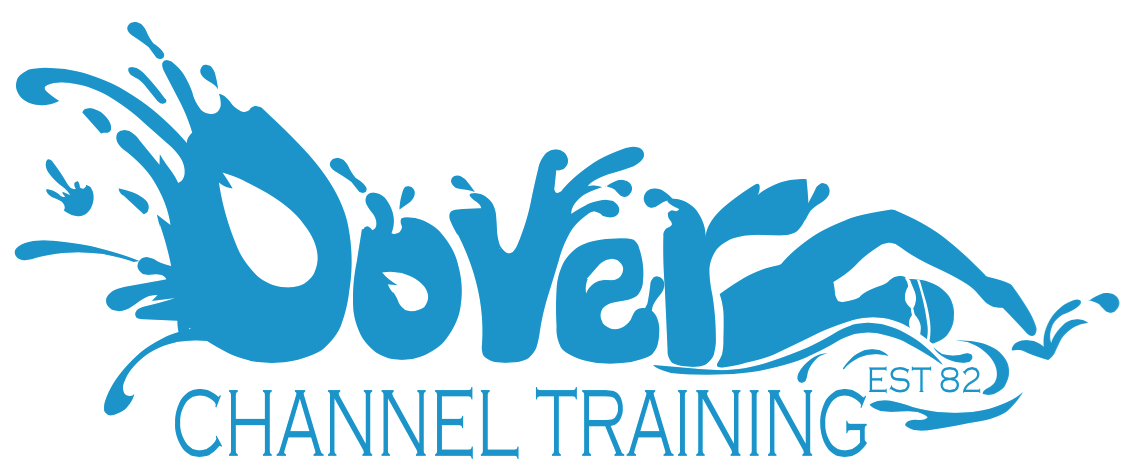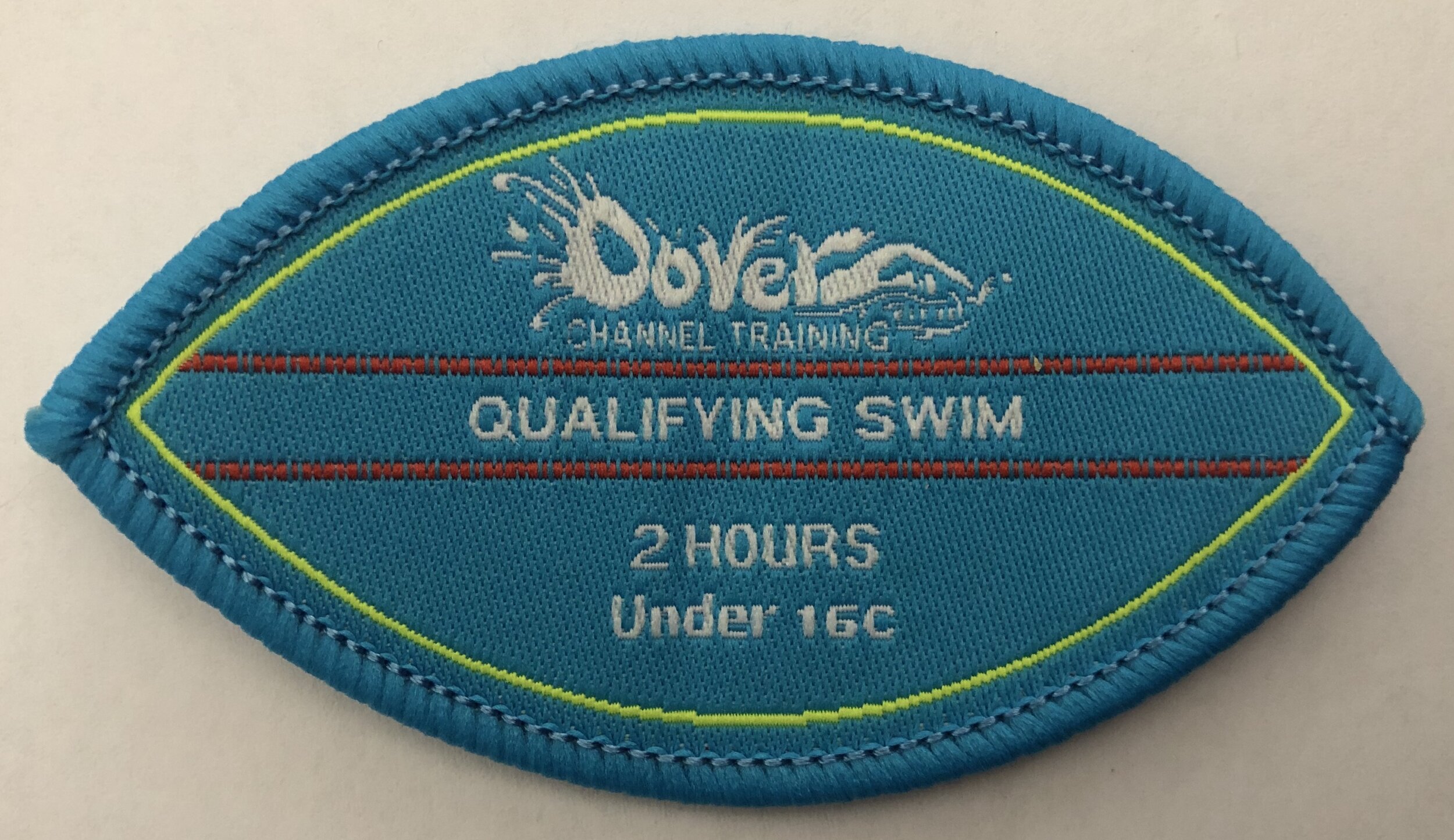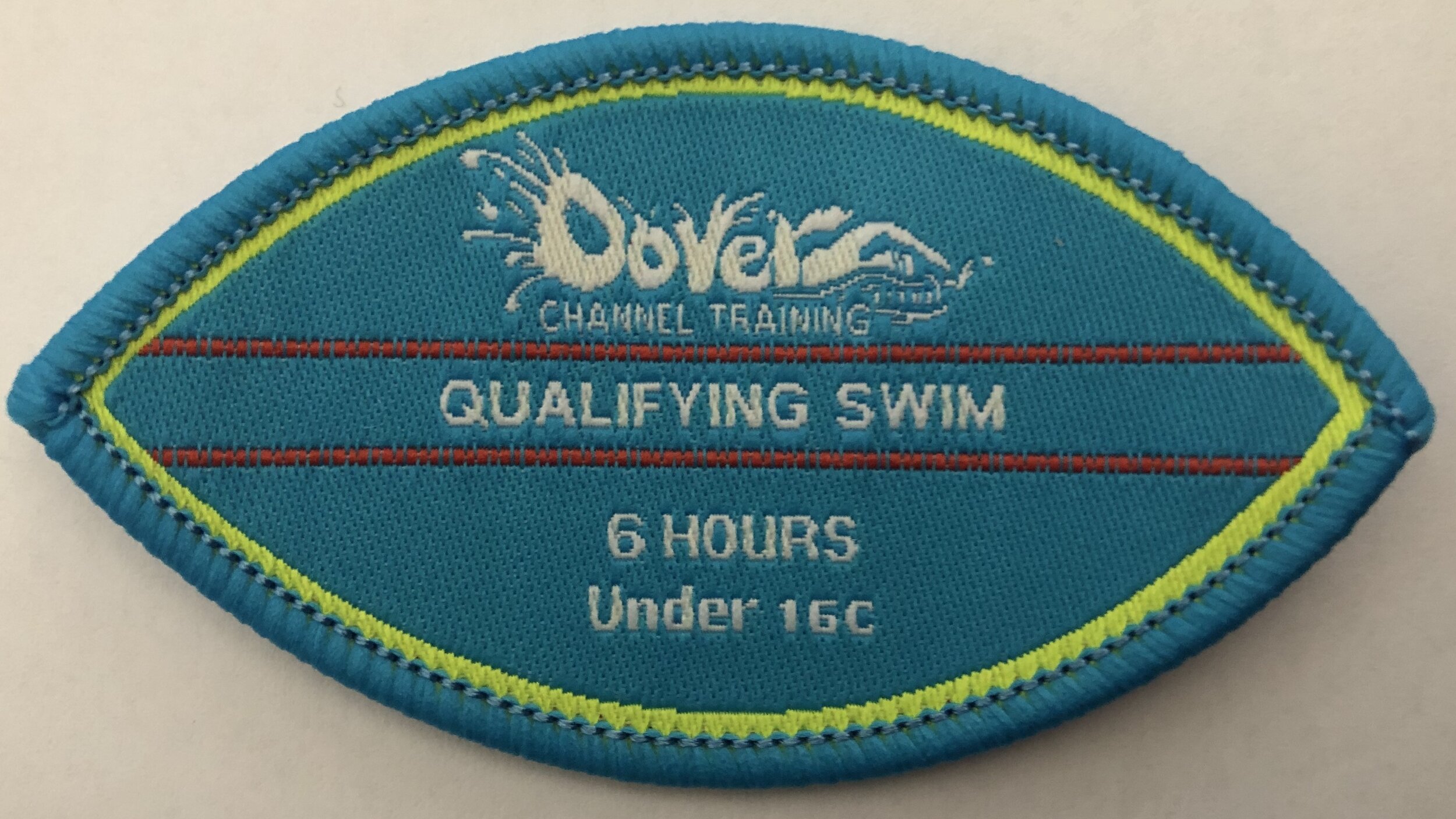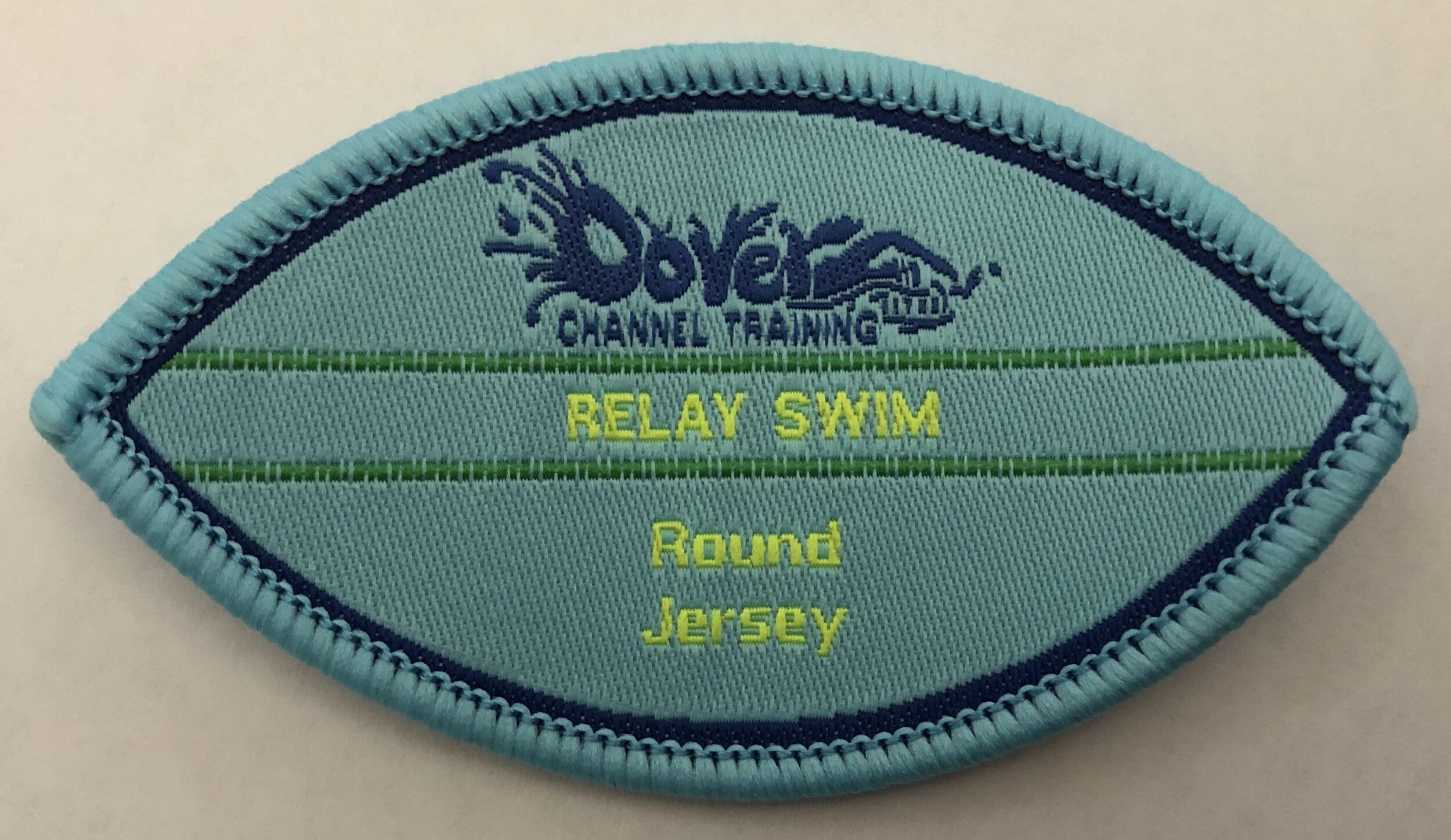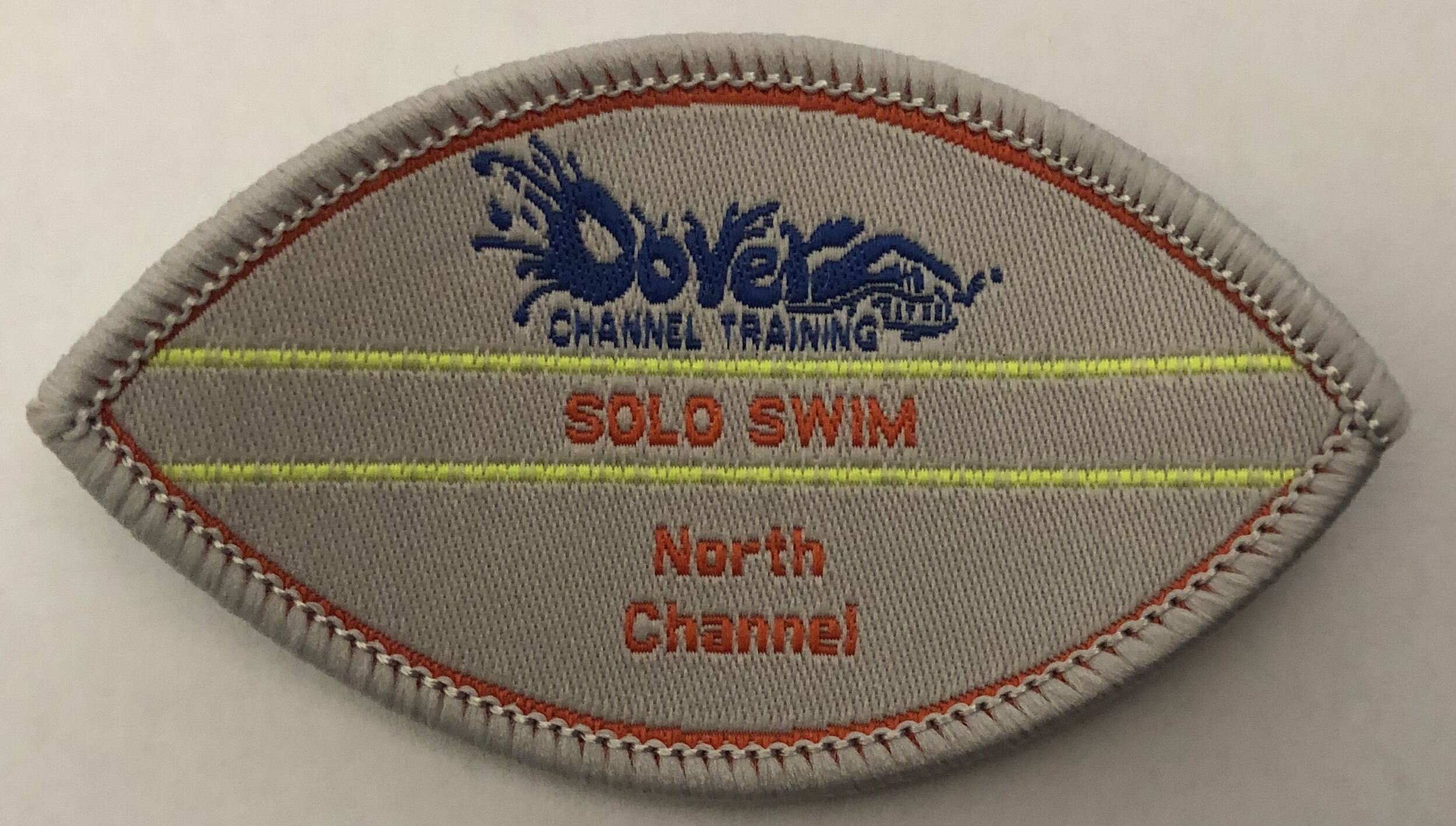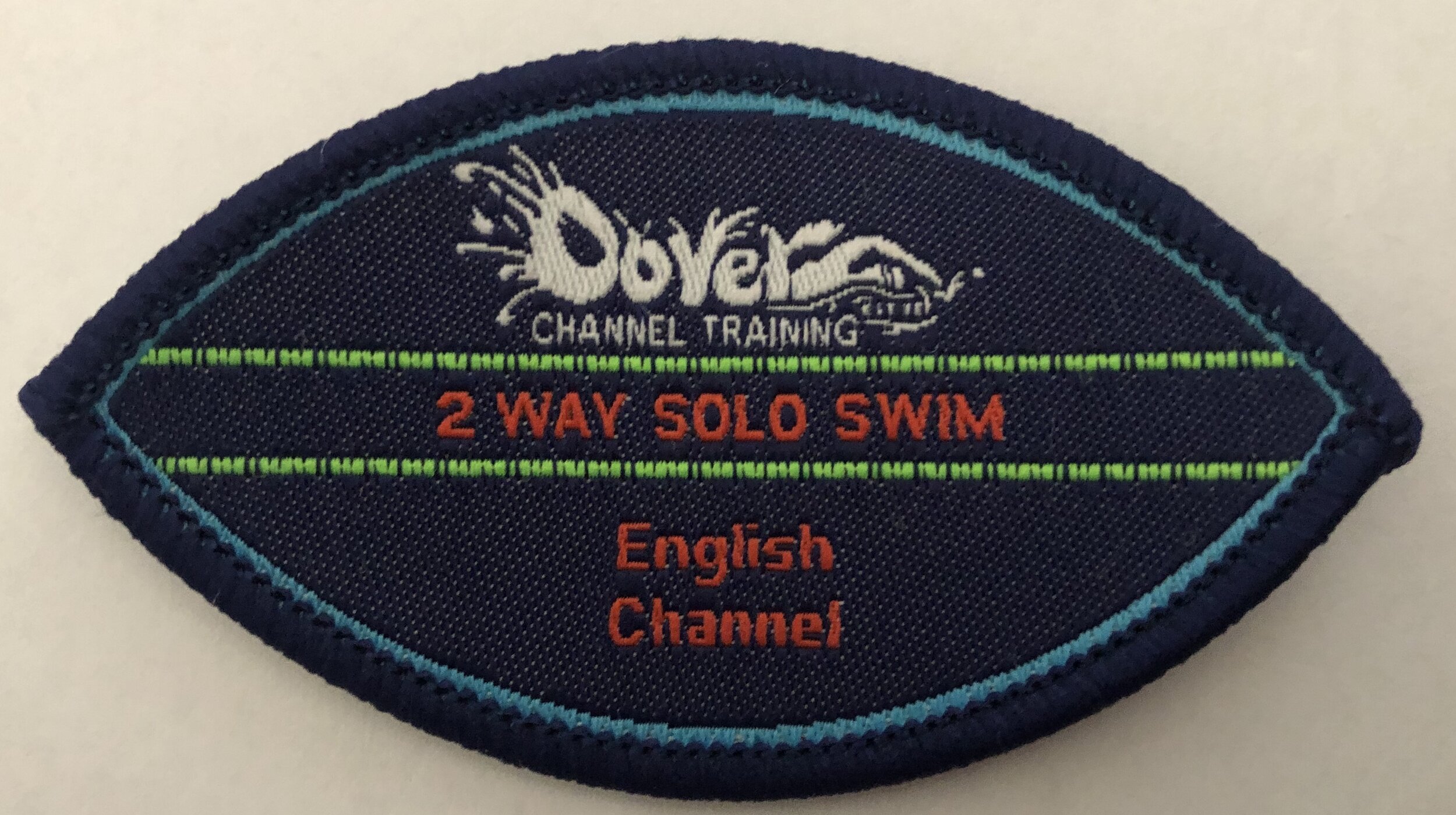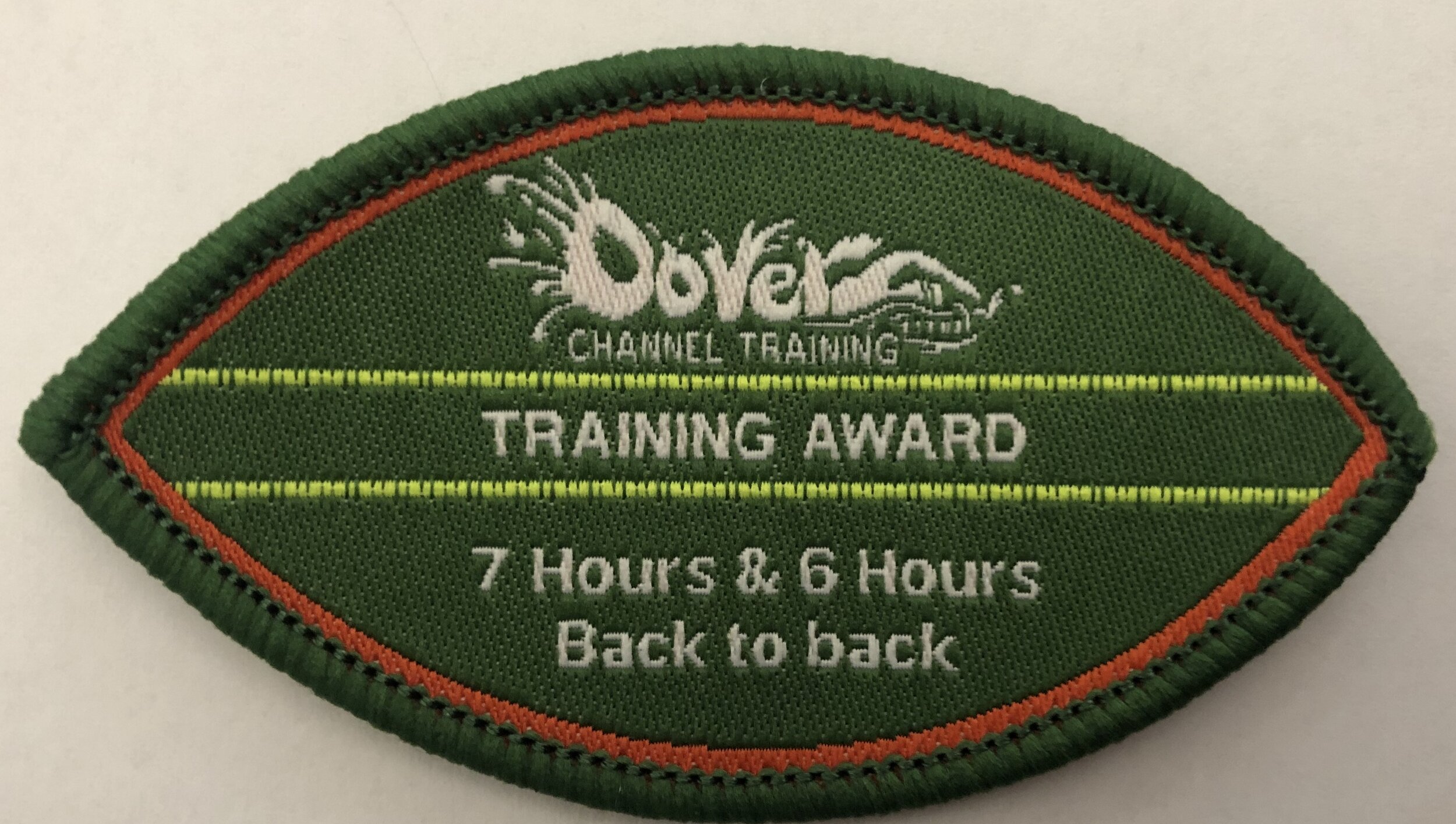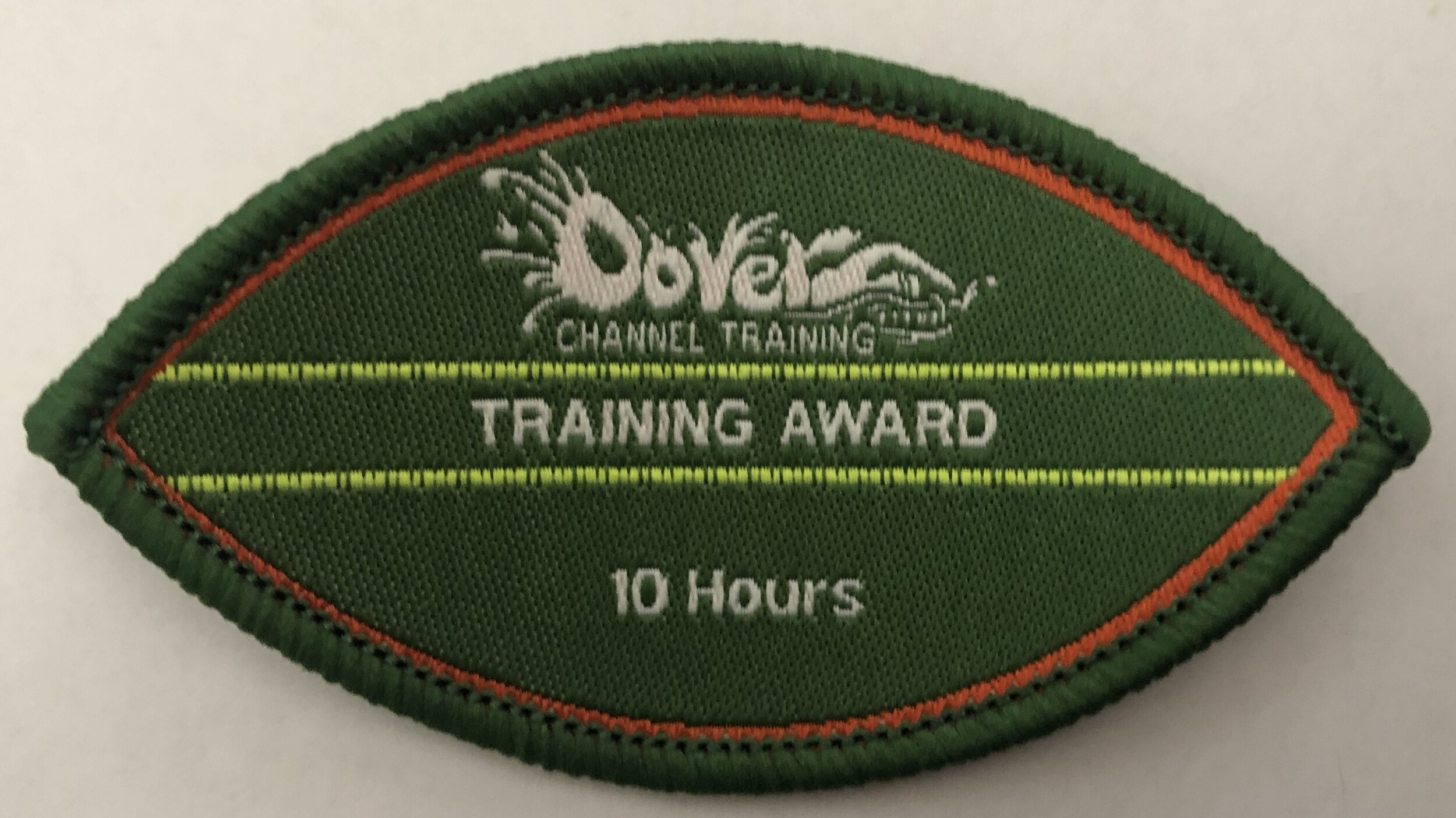2 weeks to go! What to expect..
With just two weeks to go before the 2021 training season starts, I thought I’d share some information on what to expect.
NB If you’ve trained with us before, much of this will be familiar and some of it will be new.
I’ll cover off a few things in this blog:
Where you’ll find us & parking
Start time
Hat colours
What to bring
Checking in (and out)
What to expect
Safety processes
COVID-19 response
Online shop
Next week I’ll cover our COVID-19 adaptations / response in more detail.
Where you’ll find us & parking
We meet on ‘Swimmers’ Beach’. We are opposite a small green. We’re on the beach by Sue’s fish bar and behind the railings.
Getting here
There are two main ways into Dover:
A20 (M20)
A2
From the A20
From the A20, follow it all the way to the end. You’ll then come to a series of roundabouts / junctions. The first one has a shell garage on the left. Go straight ahead here. Go straight ahead at the next roundabout. Then as you approach a set of traffic lights you want to be in the right hand lane. Turn right at the junction also signposted Dover Marina (note, the carpark on your right is where you’ll park for the big day if your pilot is moored in Dover).
Turn left after a small bridge and you’re onto marine parade. Keep going down here until you pass a small shelter on the right and you’ll see our meeting place on the right (on the beach behind Sue’s fish bar) and the small green on the left.
From the A2
Follow the A2 all the way to the end. The last stretch will give you an amazing view of the harbour & channel and you’ll find yourself at a roundabout by the ferry terminal. Avoid the temptation to jump on a ferry and turn left at the roundabout. Take the first left and you’re on Marine Parade. You’ll pass the Premier Inn on your right. We’re a little way down on the left opposite a small green and by Sue’s Fish bar.
Parking
There is lots of pay and display parking along the seafront. You can pay at the machine with cash, or probably simpler is to buy online through Ringo.
If you’re going to be a regular, you may find that it’s cheaper to pay for a 6 month parking permit, that’s what I do. You can do that here for £150.
Seafront is £1.30 per hour or £7.80 for a day (Ringo will charge a small fee).
There are a limited number of free parking spaces on a Sunday behind the small green near where we meet.
Please can I ask that you leave the two spaces closest to the beach for the beach crew to use. We have a lot of kit to move onto and off of the beach, and we need to get things from the vehicles during training too. It is a lot easier to do that from those spaces. Thank you in advance 😊
Start time
This year I have moved our start time to 10am. The start time refers to the time that your toes touch the water.
Please arrive before that time to allow sufficient time to:
Sign-in (see further information below)
Attend the mandatory safety briefing (see further information below)
Get changed and ready to go
Ensure you have enough suncream & vaseline on
Get your toes wet at 10am
Most people arrive about 30 mins ahead of start time.
We may need to adapt some of this as part of our COVID response in the early part of the season. Watch out for further information.
Hat colours
Coloured hats are an important part of our safety processes (see further information below). They assist in being able to identify DCT swimmers from other users of the harbour (or at least help with this), they also help us distinguish between solo swimmers and relay swimmers.
As you approach the beach, we know who we expect to feed on longer swims and who is due out as they are a relay swimmer.
Solo swimmers must wear red swimming hats.
Relay swimmers must wear yellow swimming hats.
I don’t mind what swimming hat you wear, as long as you only wear one hat and as long as you wear the correct colour.
If you want to buy a DCT hat, you can use the link below. It can either be posted to you or available to collect from the beach. We will also have hats that can be sold on the beach and we only accept card payments.
I’m currently looking into the demand for personalised hats, i.e. these hats with your name along the bottom of each side. If I do arrange an order, it’s unlikely that these will arrive before the start of the season.
What to bring
Here’s a list of things that you should consider bringing with you:
2 swimming costumes – in the early weeks everyone will be doing 2 swims, relay swimmers will always do 2 swims (except CSA swimmers on the day they need to do their 2 hour qualifying swim). It’s important when exiting cold water that you remove your wet costume so you’ll need a dry one to put on in its place.
A swimming hat. Please note that the CS&PF and CSA only permit one hat on a swim – so you should only train with one hat. See above to ensure you bring the right colour for you.
Goggles. It might also be worth considering bringing a spare pair too, just in case.
Earplugs – this is a personal choice. I personally find that earplugs make a huge difference to how I handle the cold. Sometimes cold water in your ears can make you a little disoriented. We sell a few versions on the beach and online.
Suncream – essential. Even with limited sun, being in the water for an extended period can lead to really quite nasty sunburn if not protected. Even with suncream you’ll see some amusing hat and goggle lines. Be sun smart.
A warm hat – essential! It makes a huge difference. DO NOT TAKE OFF YOUR SWIMMING HAT UNTIL YOU HAVE A WARM HAT TO PUT ON IN ITS PLACE. Dover channel training hats are available to buy on the beach.
A towel that you can change under on the beach or something like a dry robe.
Lots of warm layers – you will need to wrap up warm after each swim, particularly in the early weeks. T-shirts or base layers, hoodies, socks, coats etc. Dover Channel Training clothing is available on the beach should you wish to buy.
Gloves – these can be beneficial in the early weeks especially
A bag big enough to put all your stuff in. Ideally this should be waterproof, if it isn’t, please bring a bin bag to put it in. Rain is a common feature of our training.
A watch – we need you to be prompt getting in and out of the water and coming in for feeds (soloists).
Crocs (or equivalent). Unless you are one of the few people who can walk on pebbles, something that can be worn in the water will save your delicate feet. We’ll often throw your shoes to you whilst you are still in the water to make exiting easier. Flip flops can be hard to negotiate with cold toes. Crocs are ideal. If you can personalise these it will help. You can imagine how tricky it can be if we have multiple people asking for the black crocs!! Duct tape, ribbons, croc bits all work well.
A warm drink or money to pop to one of the many coffee shops in Dover. It’ll all help you warm up. We sell DCT thermal mugs if you want something to put your drink in.
A face covering for signing in and for moving around Dover at least for the first part of the season (see further communications on our COVID-19 adaptations)
Checking in and checking out
This is arguably our most important safety process.
Booking your session
All sessions must be booked in advance via the website or our app (see last week’s communication. It’s unlikely that we’ll be able to handle last minute bookings on the beach. Please book any sessions at least 48 hours before the start of the session to enable us to upload your information onto our beach signing in app.
On arrival
When you arrive you should approach your pod leader (unless you’re a pay as you go swimmer and then you can approach any of the pod leaders) and let them know your membership number (or name if you pay as you go). They will mark you as present on our beach management app and will tell you your beach number for the day and mark your hand with that number (please see COVID adaptations to follow). This is the number that you’ll use for the session.
We’ll get everyone into the water at the same time and the clock will start for your session.
Please note, if you have not registered for the session or you have not signed the annual disclaimer, then you will not be able to sign in. Please make sure that you have done this well in advance of your first swim to avoid disappointment.
No disclaimer, no swim. No exceptions.
Coming out of the water
When it’s time to come out again, please give your beach number to the beach crew on the beach and ensure that you have been marked as out of the water.
Second swim
If you are a relay swimmer, or a soloist in the early weeks, we’ll go back into the water after an hour on the beach. Please ensure that you give your beach number into the beach crew before getting back in. Again, on exit, please sign out with the beach crew.
There can be occasions when you, as a swimmer, are having an amazing swim and want to do a little bit more. I’m all for that (unless it’s so common that we’re into over training territory), but at the moment you make that decision, only you know that. On the beach your beach crew are expecting you. When you don’t arrive, we start looking for you and if we can’t easily see someone who’s running just a little late, we will invoke our emergency processes and start looking for you in earnest. You know you’re ok, we do not. It’s fine to ask to do a little more, just pop along to the beach at the right time and let the beach crew know what you’re thinking. We can then all enjoy your happy swim.
Feeding
Once we’re onto longer swims and soloists are being fed, you should also give your number into the beach crew at feeds. More about the feeding process another day, just know that this may be on the beach or via a kayak. We will need to make adaptations to our normal process during the first part of the season as part of our COVID-19 response.
We feed soloists (liquid only) after 2 hours and then hourly thereafter. From time to time there may be the odd treat, but it won’t be on every feed.
The feeding process is important. Not only does it give you the opportunity to refuel and hydrate, it is one of the processes we use to ensure that you are ok. We’ll ask for your number even if we know what it is. By asking and listening to your response it is one of the ways that we can assess your wellbeing and look for any hypothermia concerns.
It’s also a regular checkpoint to ensure that all swimmers still in the water are accounted for. If you are late or don’t turn up for a feed, we start to look for you. If we can’t see someone running a little late, we start to look for you in earnest. Invoking emergency processes is never a nice experience for the beach crew, so please do turn up on time. If you are more than 5 minutes late not only will you face grumpy beach crew but you’ll also find that the beach bar is shut!
What to expect
You’ll have picked up on some of what to expect already. Here’s some further information.
You’ve arrived and signed in with your pod leader. When you sign in you will be told how long you are swimming. You won’t find this out in advance for a few reasons:
There is a lot of uncertainty with channel swimming. This will help you learn to deal with the unexpected. We work on a cyclical pattern. There will likely be some swims where we ask you to swim for longer than you expected and some where we ask you do less than you thought. As recovery is an important part of your training programme, do enjoy the easier weeks.
What we do is dictated to a certain extend by the weather forecast. A hot sunny day on a flat calm neap tide is an entirely different swim to horizontal rain in a force 5 on a spring tide.
We continually review your progress and how you are coping. We want to work with you to achieve your very best building from where you are today to being in a good position to take on your chosen event at the right time.
So I wouldn’t bother asking about next weekend or even tomorrow. In some cases you may even find that your swim on the current day is extended or shortened. You’ll soon come to learn to expect the unexpected.
You’ll also find out any other significant features about this training swim when you sign in. Perhaps it’s a target distance or suggestion for speed work. Or some other variable. Let’s see how the season unfolds.
About 5-10 minutes before the swim starts, there will be a safety briefing. This is mandatory to attend. In this briefing we will share any important information such as any changes to the swim zone and what to expect in the forecast.
When you get undressed for your swim, ensure that you pack your bag in the order that you’ll need it later. If your bag isn’t waterproof, please place it in a bin bag if there is a chance of rain.
Please leave any valuables in the beach safe (there are sometimes opportunistic thiefs on the beach).
As mentioned above, in the early weeks, whilst the water is still cool, everyone will do two dips. As the water warms up the time in the water will increase, though also respecting a cyclical pattern, particularly for soloists. The duration in the water can ramp up pretty quickly. We will aim to get you to your qualifying swim below the required temperature. Then the real training begins.
Often the big training weekends for soloists will be 7 hours on a Saturday and 6 hours on a Sunday. This will be done more than once. For some swimmers we may extend this.
After your training session is complete, it’s really important to get changed quickly. You continue to cool after you get out of the water and there tends to be a golden five minutes before shivering starts. Whilst you may feel elated after your swim and your efforts, please leave the chatter until after you are changed. Get changed in this order:
Towel or Dryrobe to change under on, wet costume off. Leave your swimming hat on for now.
New costume on if you’ll be going back in
Lots of loose layers, focusing on the core first (your feet can wait).
Dryrobe or coat to keep the wind and weather out
Easy to put on socks & shoes
Now replace your swim hat with a woolly hat.
As we get into the middle of summer and you acclimatise, you may find that you don’t need all the layers anymore and that is fine. It’s worth bringing them in case.
To understand what it’s really like, why not watch this short video of the class of 2019.
Weekly blogs
I’ll aim to do a weekly round-up comms after each training weekend. For those that are there it will serve as a reminder of your journey and for those who are training elsewhere but with our support, my aim is that you feel a little closer to us.
If you think that there is something that should be included in any particular week, e.g. you want to call out someone for supporting you or you achieved a personal goal, please do let me know.
Safety processes
I’ve already highlighted a few of these. Please also see the full safety briefing document available via the button at the bottom of this section.
Signing in and out
It’s essential that we know who is in the water at all times (see above). We also use secondary checks like making sure all the bags, crocs & items from the safe are gone at the end of a session. Occasionally we have some lost property and we will double check to make sure that we are 100% certain that the owner did exit the water and simply forgot to take their stuff home. If you can double check for your own kit it is very helpful.
Swim zone
We are lucky that we have a protected swim zone. The outer edge is marked by a line of large buoys: red, green then a line of yellow. Swim inside these buoys. To the right there is a line of small yellow buoys on a line in line with the last red hatted pole. Swim inside this line. To the left is the ferry wall. You can swim all the way to this wall if conditions permit. Once you’re past the yellow buoys you can see the outer edge of the swim zone by two white lines painted on the wall at the top.
On the beach side of the zone, always swim outside the gyroynes and posts.
A full circuit of the harbour is approximately 2km if you go around the edge.
We ask swimmers to swim in an anti-clockwise direction to minimise collisions. You should still sight regularly to ensure you are aware of other swimmers and where you are in the swim zone. Remember this is our approach, there are no formal ‘rules’ on this, so other groups or members of the public may not follow the same routes!
You should cut your circuits short if needed to ensure you arrive at the beach on time for a feed or to exit.
There is a slipway within the swim zone where small boats and jet skis can launch. Most understand the rules of harbour and that they are only allowed to pass through the swim zone slowly and exit out of the area for their activity. Sometimes there are those who don’t understand the rules. We keep an eye out for these and do alert the authorities if we believe that there is any danger. You should also be aware of these small vessels, particularly in and around the area of the slipway to the red and green buoys.
Be aware that as you look out to sea, to the right there are plenty of beaches that you can exit from if you need to. To the left there are less exit points.
We do not require you to wear a swim buoy, you can if you want to.
Assessment swim
Your first swim with us will also be an assessment swim. We need to be sure that you are safe to swim in open water. On some swims we will have the DCT buoys out for you to swim there and back from. Alternatively, your first swim to the small buoy line is assessed. We’ll watch you as you leave the beach and inform you if we have any concerns.
Safety cover & buddy swimming
The beach in Dover does not have lifeguard support. We support each other. It is important to swim with another swimmer of your own speed. If you feel unwell or have any concerns, please make your way back to the beach.
You should be confident that you can complete the circuit you set in the weather conditions and water temperature before you go too far down the harbour to the left.
If you are ever unsure, come back to the beach and ask for the advice and / or support of the beach crew.
You may see a kayak on the water from time to time. The kayaker will have radio contact with the beach crew.
You can find our full Dover safety briefing document via the link below.
COVID-19 Adaptations
COVID-19 continues to be a feature of our lives. Whilst lockdown is starting to gradually lift in the UK, we still have restrictions in place and will do for at least some of the season.
The diagram below shows the key dates of the UK Government’s roadmap out of lockdown as it applies to our training.
Next week’s comms will explain the ways in which we are adapting our training to comply with the letter and the spirit of the law.
Shop
Did you know that we have a shop? You can find all the things that are available on our website. Watch out for some new products being added in the coming weeks.
You can order for delivery to your address or for collection on the beach.
We have everything from the things you need for the big day like lights & feeding reels to swimming hats, bobble hats, t-shirts and swim badges.
We even have some bundles available to get even better discounts.
There’s a sneaky peak of some of the options below or why not take a look at the full shop by clicking the button below!
We have most things available on the beach too (credit card payments only). To avoid disappointment, it’s worth ordering in advance.
See you on the beach!!
If you want these updates directly to your inbox, use the sign-up form below. You can unsubscribe at any time.
